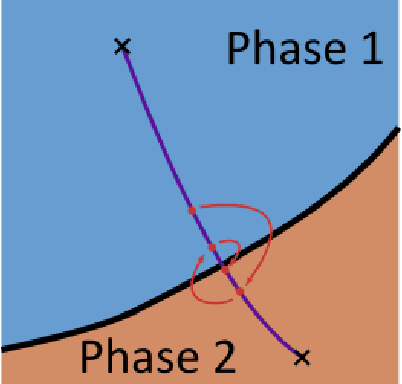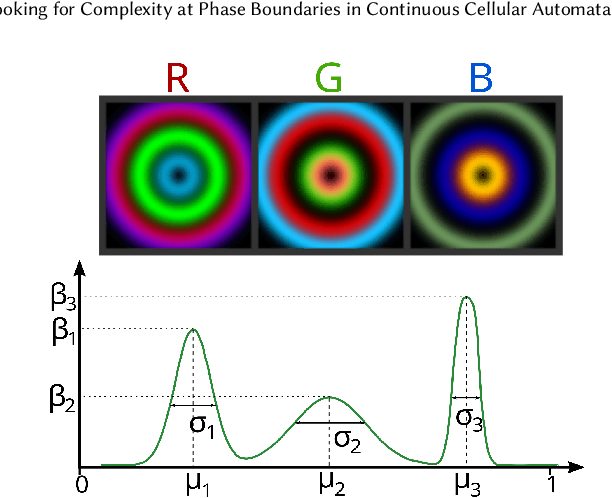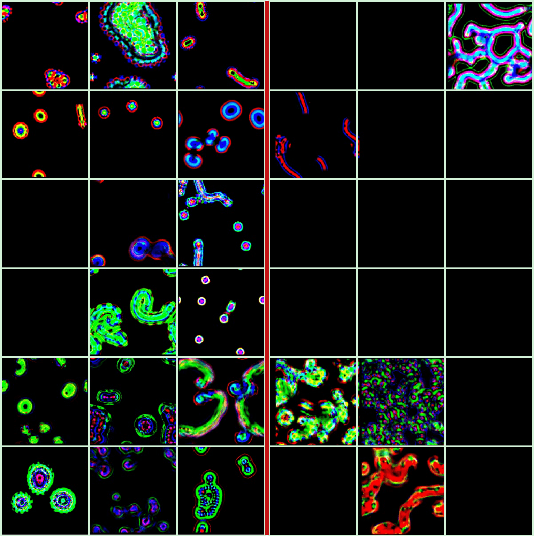Vassilis Papadopoulos
Looking for Complexity at Phase Boundaries in Continuous Cellular Automata
Mar 08, 2024



Abstract:One key challenge in Artificial Life is designing systems that display an emergence of complex behaviors. Many such systems depend on a high-dimensional parameter space, only a small subset of which displays interesting dynamics. Focusing on the case of continuous systems, we introduce the 'Phase Transition Finder'(PTF) algorithm, which can be used to efficiently generate parameters lying at the border between two phases. We argue that such points are more likely to display complex behaviors, and confirm this by applying PTF to Lenia showing it can increase the frequency of interesting behaviors more than two-fold, while remaining efficient enough for large-scale searches.
Arrows of Time for Large Language Models
Jan 30, 2024Abstract:We study the probabilistic modeling performed by Autoregressive Large Language Models through the angle of time directionality. We empirically find a time asymmetry exhibited by such models in their ability to model natural language: a difference in the average log-perplexity when trying to predict the next token versus when trying to predict the previous one. This difference is at the same time subtle and very consistent across various modalities (language, model size, training time, ...). Theoretically, this is surprising: from an information-theoretic point of view, there should be no such difference. We provide a theoretical framework to explain how such an asymmetry can appear from sparsity and computational complexity considerations, and outline a number of perspectives opened by our results.
 Add to Chrome
Add to Chrome Add to Firefox
Add to Firefox Add to Edge
Add to Edge